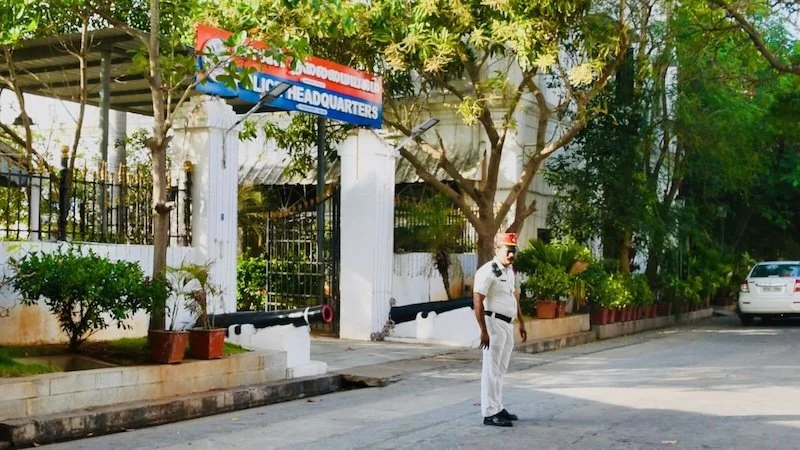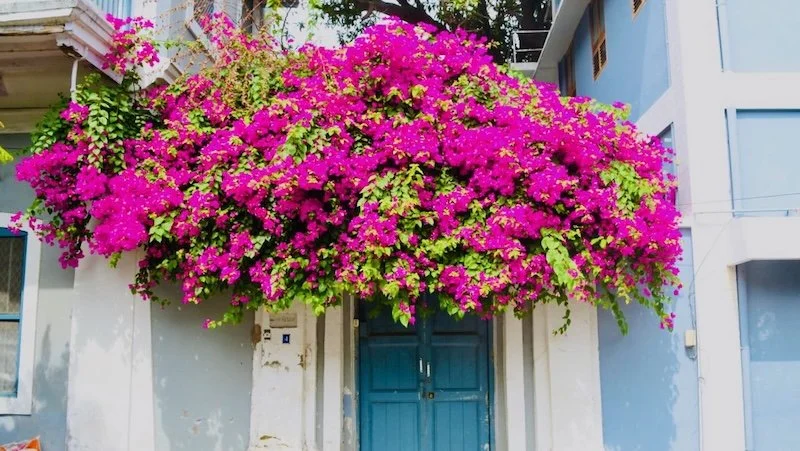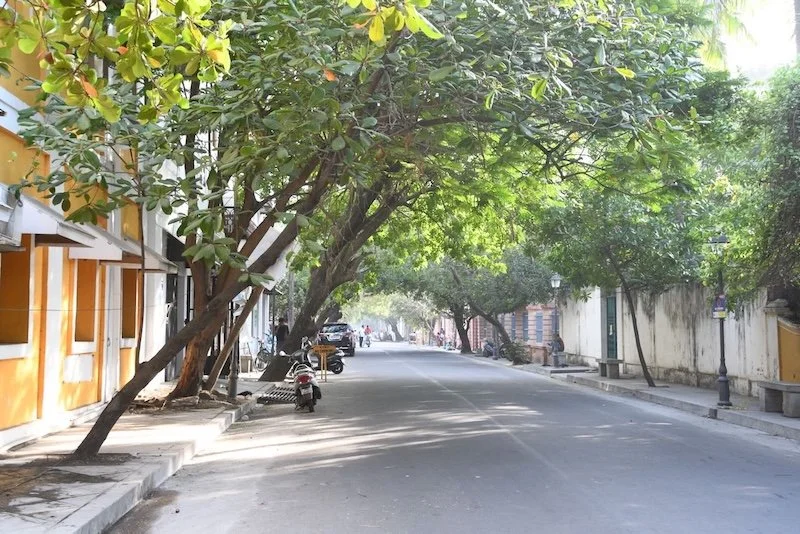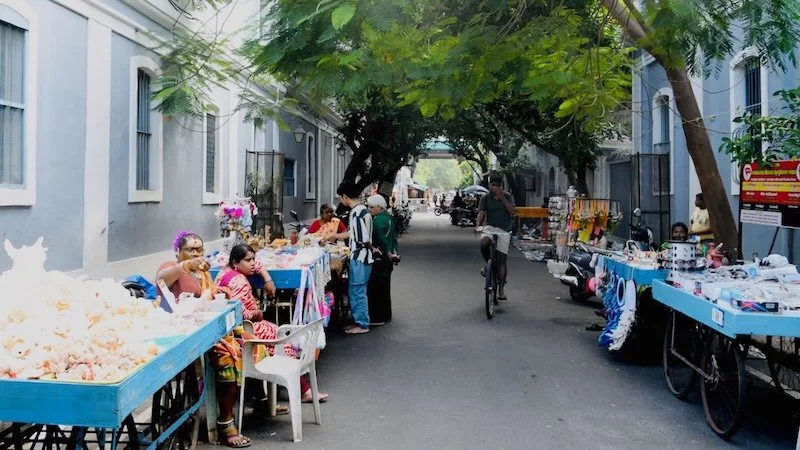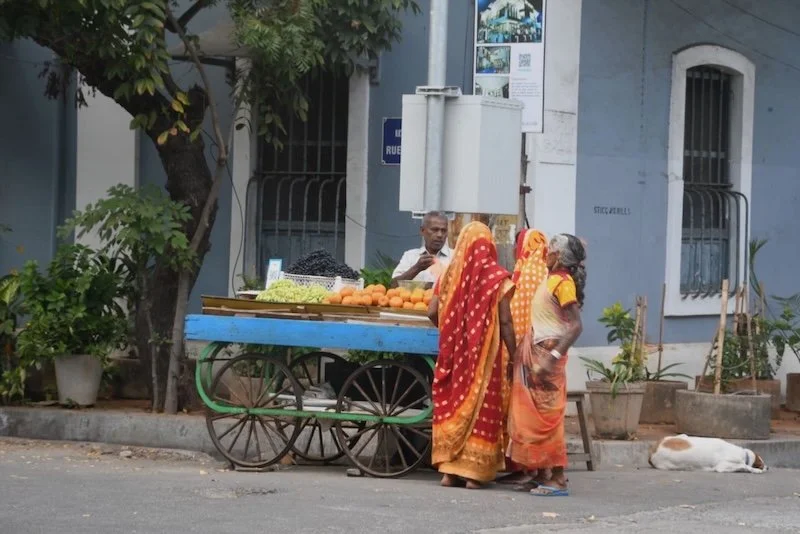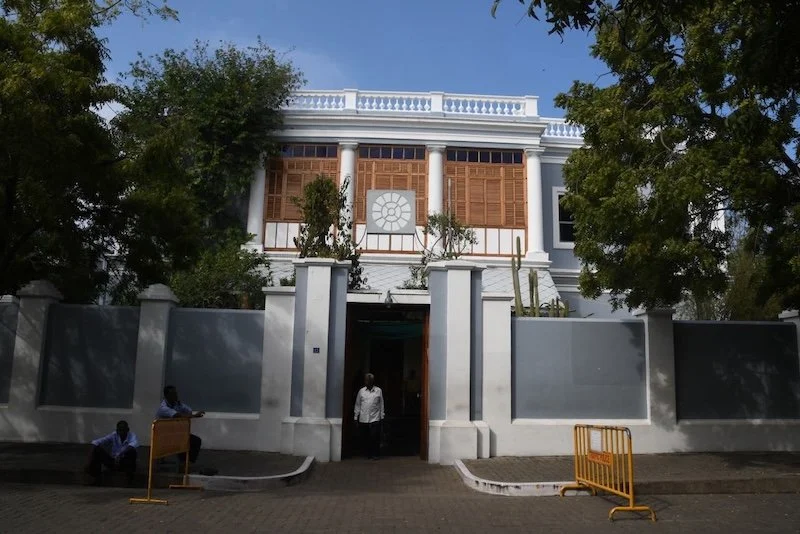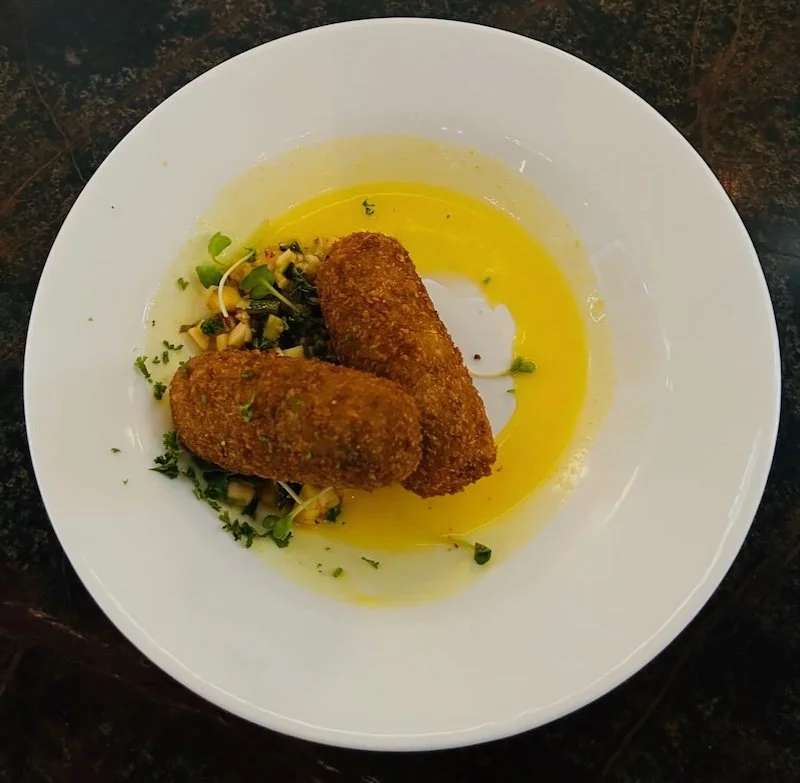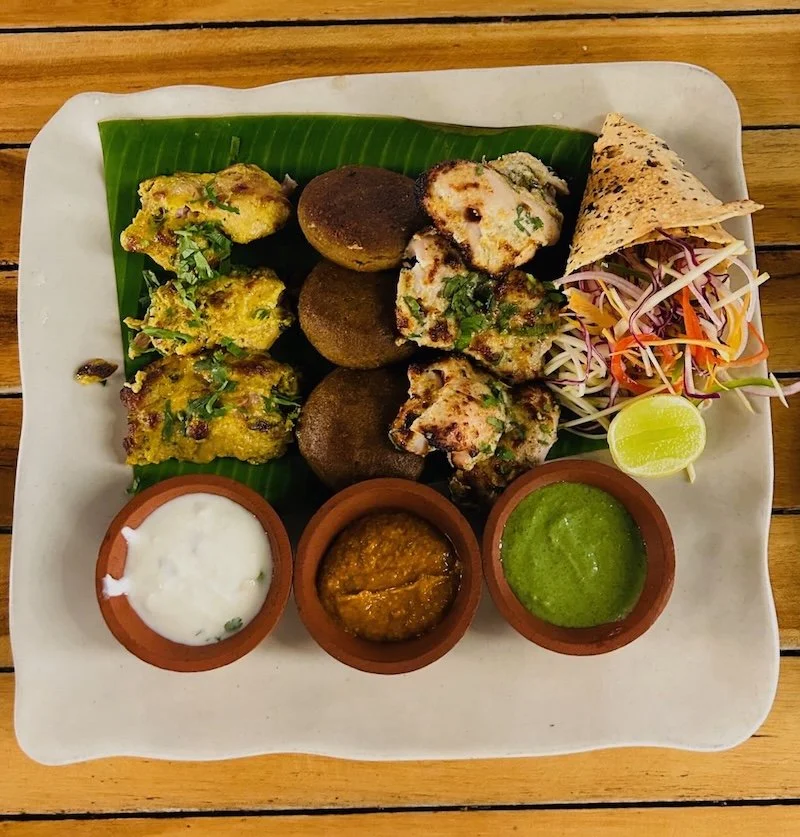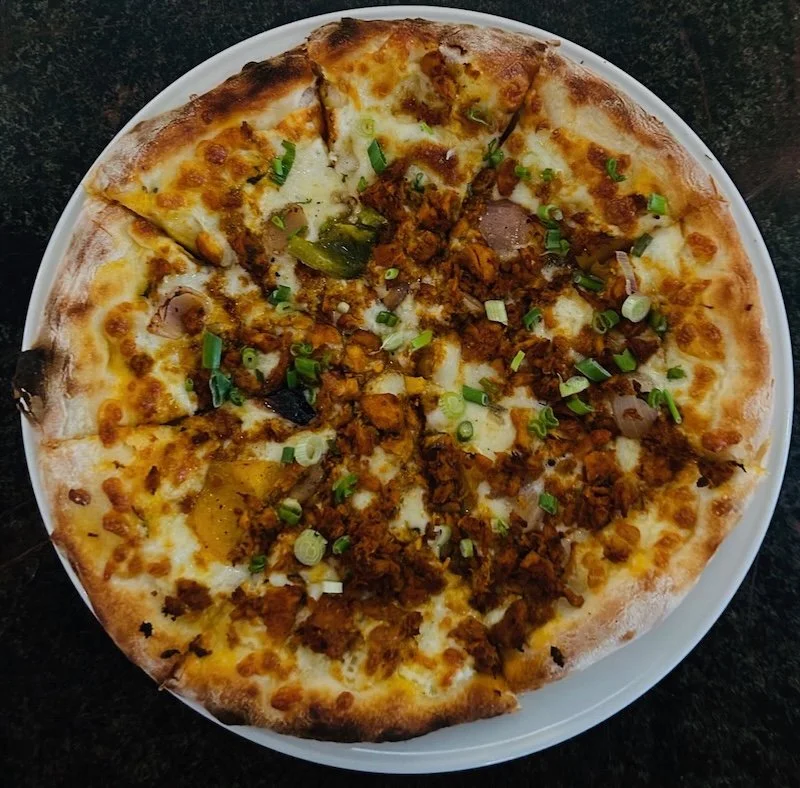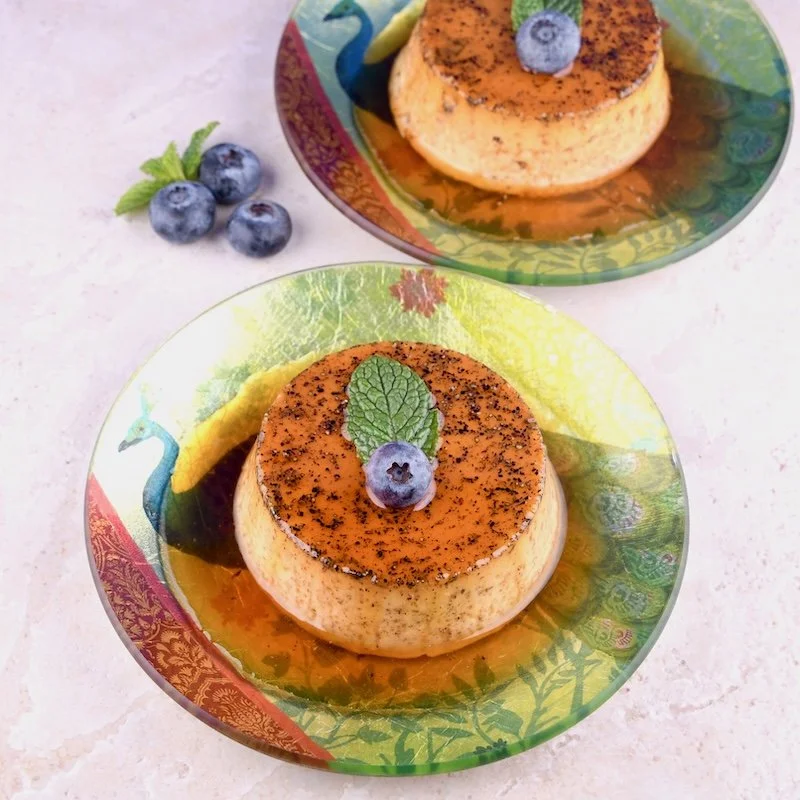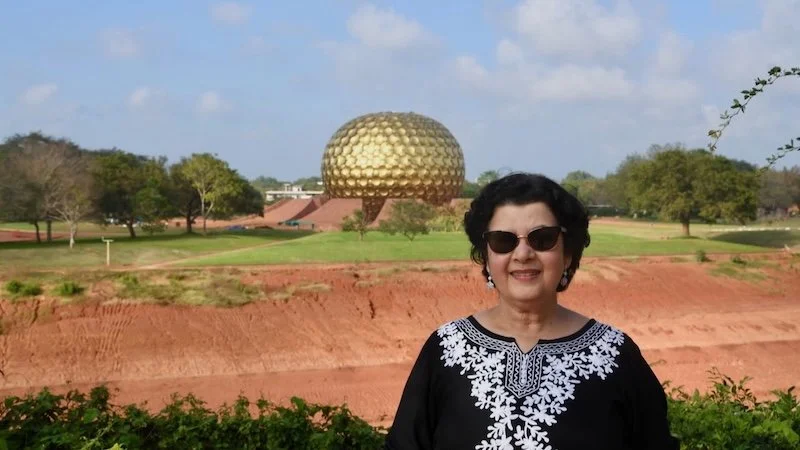Cardamom Créme Caramel In Pondicherry
As we strolled along the beach on a bright sunny day, it would have been easy to convince ourselves that we were in a French seaside town. The wide seafront promenade, the swaying palm trees, the white painted balconies overlooking the road all reminded us of a Mediterranean resort. In reality we were on the other side of the world, in the city of Pondicherry in South India.
Pondicherry (now officially renamed Puducherry) fell into French hands in the late seventeenth century when it was occupied by the French East India Company that came to India to trade for textiles, spices and gems. Over the next two centuries Pondicherry was frequently besieged by the British or Dutch as they battled the French for supremacy, and captured by them on several occasions. However the French always managed to regain the territory and ruled it until 1962 when it was finally reunited with India. The long French presence left a deep impression on the culture, architecture and cuisine of Pondicherry, that is still visible to this day.
The great cathedral, triumphal arches, colonial buildings and war memorial are all distinctly French, as is much of the plan of the old city, laid out in a neat grid. The main streets are still named Rue St. Louis and Rue Dumas, and police officers wear distinctive red kepis. There is a large French Consulate in Pondicherry that keeps the French language and culture alive by supporting a wide range of activities.
Pondicherry is, however, very much a south Indian city and the local Tamil culture was equally visible everywhere. We walked past exuberant crowds lining up to enter brightly painted temples. The streets were lined with vendors selling everything from coconuts and fruit to clothes and jewellery. Lush tropical trees formed an arch over the roads that provided welcome shade and bright pink bougainvillea flowers created bowers over house doors.
A visit to the Pondicherry Museum reminded us that the history of this region is much older than that of the French colony. We saw bronze statues dating back to the tenth century Chola empire. Even older were Roman coins from the first century when Roman ships set sail from the Red Sea and visited ports all along the south Indian coast. The museum displays large clay amphorae in which Roman traders brought wine for Indian connoisseurs who had developed a taste for Italian vintages.
One of the biggest attractions in Pondicherry is the Aurobindo Ashram, a spiritual community founded in 1926 by the philosopher, poet and yogi, Sri Aurobindo. Born Aurobindo Ghose, as a youth he was a fiery Indian nationalist whose membership in revolutionary groups and anti-British writings resulted in a warrant for his arrest. He avoided capture by escaping to Pondicherry which was a French territory where he was was safe from British justice. There, he abandoned politics and became a spiritual leader who attracted many disciples.
Just outside the city of Pondicherry is Auroville, the town founded by Sri Aurobindo as a place where people from all over the world could come to live in harmony. The centre of the town is the Matrimandir, a giant golden dome designed to be a place for concentration and meditation. The interior is not open to visitors, but we could see it from the outside during our visit. Auroville has a visitors centre where we learned about its history and ideals, visited boutiques that sold handicrafts made by residents, and could buy books by Sri Aurobindo and other writers from Auroville.
Creole food, as the local cuisine is called is an intermingling of Tamil and French culinary traditions, deftly combining South Indian ingredients and spices with French cooking techniques. In the hands of creative local chefs, the result is an array of unique dishes that you will not easily find elsewhere. We had lunch at the charming Coromandel Cafe, in the heart of touristy French Town. Sitting in the lovely converted French colonial house that once belonged to a judge, surrounded by lush tropical greenery, we enjoyed the smoked eggplant croquettes, spicy curry leaf chicken pizza and banana French toast. Another wonderful place to eat on the waterfront promenade is Blueline Restaurant. Sit outside on their graciously appointed patio and savour dishes such as Pondicherry Bouillabaisse, Chettinad fish cakes and Vanilla créme brulee, while watching people promenading in their evening finery.
This decadent, cardamom speckled créme caramel is the perfect fusion of French and Tamil cuisines. Known simply as caramel custard, it blends the intoxicating aromas of French vanilla and cardamom in a classic, creamy custard drenched in rich golden caramel. Sometimes thick coconut milk is used in place of the cream to provide that authentic Creole flavour. You can strain the custard mixture through a fine sieve or cheesecloth for a smoother look, but I personally like the gentle crunch of cardamom when I dig in! And of course, you have the option of leaving out the cardamom completely if you so desire.
French Vanilla Cardamom Créme Caramel
Cooking spray
1 cup sugar
2 whole eggs
2 egg yolks
1 can (354 ml) evaporated milk
1 can ( 300 ml) sweetened condensed milk
1 cup whipping (heavy) cream
1 tsp each: French vanilla essence, ground cardamom
Preheat oven to 325F. Lightly spray 8 mdm 6 oz ramekins with cooking spray. Place on a rimmed baking tray.
Place sugar in mdm heavy saucepan set over low heat. Let sugar begin to melt, then swirl the pan every so often to incorporate. Don’t let sugar boil or bubble and don’t use a spoon to stir. Keep swirling gently till all the sugar has melted and turned darker in colour, about 3-4 min. Switch off stove and let saucepan sit for another min for caramel to darken further without risk of burning.
Pour caramel evenly into prepared ramekins. Let cool and set for 5 min. Caramel is going to be very hot, do not touch or stir.
Meanwhile, combine whole eggs and yolks with condensed milk, evaporated milk and cream in a deep mixing bowl. Stir with a whisk, then add the vanilla and cardamom. Whisk again until well blended.
Pour into the ramekins, filling them about 3/4 to the top, using about 3/4 cup of the custard mixture per ramekin.
Fill a large jug with water. Place ramekin tray in oven, then gently pour water into tray till it reaches halfway up the sides of the ramekins, taking care not to let it spatter into the custard. Push tray gently into center of oven.
Bake for about 45 min until custard is set, do not over-bake. Check for done-ness by gently shaking the ramekins. If the center wiggles, give them another couple min to finish cooking.
Remove tray from oven and carefully lift ramekins out of water with tongs, placing them on the kitchen counter to cool down.
Loosen edges by gently running a sharp knife around edges of the custards.
Cover each ramekin with plastic wrap and refrigerate for at least 6 hours or up to overnight.
When ready to serve, leave custards on counter for 15 min, then shake each ramekin lightly to loosen custards. Unmould by holding a serving plate over each ramekin and turning upside down, giving it a sharp shake to loosen. The custard will settle onto the plate with the caramel pooling on top and around it. Repeat with remaining custards.
Garnish with berries if desired.
Store extra custards in ramekins in the fridge for up to 4 days or freeze them covered for later.
Serves eight





